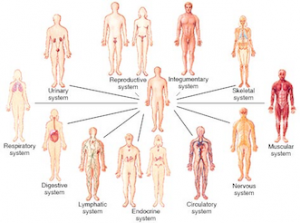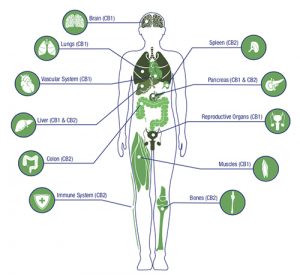Whether you are new to CBD or you have been trying to navigate your way through the world of CBD for years.
The truth is the science is still being researched and developed.
The Science has been under development for nearly three decades and the science has not been able to fully explain what, how, and why CBD is affecting us.
There are things that have been proven through science about cannabinol (CBD).
We know that CBD cannabinoid affects our CB1 and CB2 receptors.
This is the same way that drugs like morphine bind to other receptors in our brains to achieve their effects.
These receptors are part of our endocannabinoid system.
This also raises the question, why hasn’t “Big Pharma” jumped into this industry yet.?
The answer is that we don’t have a full understanding of what the function of the endocannabinoid system is doing within us, or why.
It seems as if it is the at the center of all systems working as the communication system for our bodies.
Also regulating and deligating to maintain balance throughout our body.
According to the FDA, This is holding up all claims that anyone can make about CBD.
This is why we felt it was important to let you know about this strange limbo that you encounter while you read through the CBD industry, such as statements like “ this product could potentially help.”
With no one able to make any full-fledged claims of the efficacy of CBD.
It’s difficult for most humans to not raise an eyebrow of skepticism;
If we can’t fully explain this system that CBD is affecting with-in ourselves then how do we even know it exists? Why doesn’t the FDA like it?
This is why we felt it was so important to write about this subject because we care about our customers and want everyone to be on the same page as us and science.
There are some fairly easy things to grasp in the literature written on the Endocannabinoid system without getting too deep into the biology that could potentially get confusing and cause more research for you.
What is the Endocannabinoid System
 The Endocannabinoid System (ECS) is a cell signaling system that binds to receptors and tells cells what to do.
The Endocannabinoid System (ECS) is a cell signaling system that binds to receptors and tells cells what to do.
The ECS has been discounted in our knowledge of the human body as a major system because of its multifaceted functions and remarkably complicated reasonings for action.
We are slowly learning more about the ECS and recognizing it as important, if not one of the most important of our other 11 major systems in our bodies.
It is believed that the reason any signals or actions put in place by the ECS is to help create balance in our bodies; that not one cell is working harder than it has to, also known as homeostasis.
It helps to think of ECS as our internal checks and balance system in constant interaction with other systems and sending help or back up when needed.
The ECS has been called “the most important physiologic system involved in establishing and maintaining human health”.
Not giving one thing to much power over the other and maintaining a balanced system.
From our sleep to our appetite we all have an ECS with-in our bodies working all the time making sure everything is running smoothly.
What does the Endocannabinoid System (ECS) do
Best way to put it is:
The Endocannabinoid System is the internet and the law, maintaining order and balance in our body.
ECS is comprised of sites or receptors that bind to closely related compounds or cannabinoids, the receptors are embedded into our central and peripheral nervous system.
The most well-known receptors in the ECS are your CB1 and CB2 receptors in our bodies that scientists can watch them affect our nervous system and our immune system.
These processes in our body that seem to work alone are all working together to form our complicated highway like systems in our bodies.
ECS can also have new compounds made in our bodies to balance out our traffic in our bodies.
One of the best examples to explain these processes comes from the feeling that you get from exercise, commonly known as “runner’s high”.
Most know that endorphins are released to help create this feeling of euphoria, but you may not know that anandamide is also being produced and released.
Anandamide is made from fatty acid into a molecule that becomes an endocannabinoid produced in our bodies that binds to cannabinoid receptors and feeds into your brain.
This I believed to be important to mention because it uses the ECS to communicate with our brain by compounds stored in our bodies that are converted into our ECS to take action.
Showing a brief diversity of the ECS and its function by describing its complex abilities to maintain balance in our body should give you a better understanding of how complicated this can get.
Conclusion
In future blog posts, we go deeper into the science.
We tried to not get too deep on this one and keep it as simple as possible, with such a complicated topic.
This post is meant to give you a better understanding of what CBD is going through on its road to finding its way into all of our lives.
If your curiosity is on a roll now and you can’t wait to learn more, “buckle-up” because this is barely scratching the surface.
It doesn’t take much to understand WHY people don’t understand CBD’s effects on us.
It takes a lot more to understand HOW the ball keeps rolling forward with society’s social stigmas soon to be the one under scrutiny.

